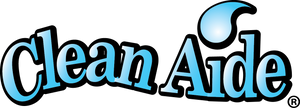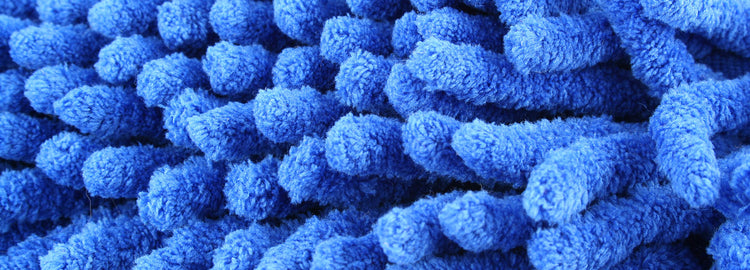There are many ways to combine yarns when weaving a fabric. Depending on the weave, the final product will have a different physical aspect, and very different properties.
Although most microfibers excel in cleaning, some have a better efficacy for dusting, drying, glass and mirror cleaning, etc. The following is a quick compilation of the main microfiber weaves and their typical application.
 Terry Weave: Unclipped, looped piles that easily absorb large amounts of liquids.
Terry Weave: Unclipped, looped piles that easily absorb large amounts of liquids.
This is our primary microfiber weave. Although a completely different material, this type of weave is common in cotton towels. The long, soft loops retain particles more effectively, making this type of weave ideal for dusting. It can also absorb large quantities of water, which generates great results in drying applications.
 Waffle Weave: The “waffle” texture gives more surface area for absorption and allows air to flow through, ensuring a fast drying process.
Waffle Weave: The “waffle” texture gives more surface area for absorption and allows air to flow through, ensuring a fast drying process.
This fabric is woven on a weaving machine or loom, making it more durable than other textiles. Waffle weaves are often found in the kitchen as they excel at drying dishes. The same property makes them a favorite tool of avid automotive detailers.
 Shaggy Weave: This weave consists of long pile yarn that is soft and relaxed.
Shaggy Weave: This weave consists of long pile yarn that is soft and relaxed.
The long loops are cut, exposing even more of the split yarn. This type of towel is effective for removing all dust from dashboards or wooden furniture, including very hard-to-reach areas. The extremely small diameter of the filaments makes the finished product ideal for uneven surfaces.
 Chenille Weave: Consists of yarns that have a soft pile extended from their surface.
Chenille Weave: Consists of yarns that have a soft pile extended from their surface.
Chenille yarns are soft and very flexible. This type of weave is commonly used for detailing mitts, dusters and bath mats. The additional contact surface created by the weave is ideal for cleaning and also very comfortable to walk barefoot on. In some instances, we will call this weave the "knobby" weave.


